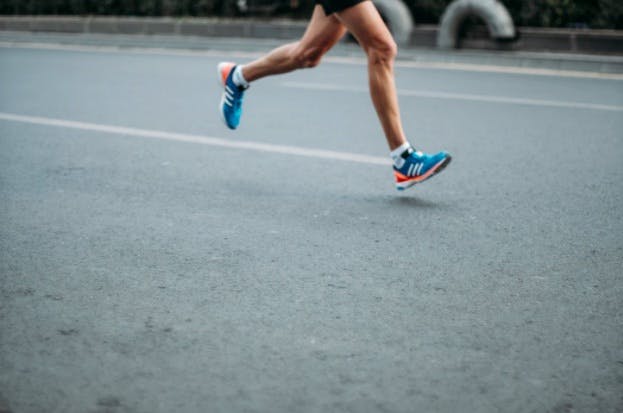How to Treat and Prevent Runner's Knee: Best Runner's Knee Treatment
May 14th 2020
Do you experience pain while running? You may have something known as runner's knee.
Read on to find out all about runner's knee and its symptoms, as well as runner's knee treatment and prevention.
What Is Runner's Knee?
Runner's knee is a term used to describe several conditions that affect the knee and cause pain around the kneecap, also known as patellofemoral pain syndrome.
What Causes It?

Runner's knee isn't only caused by running. It can be produced by any type of overuse of the knee.
Runner's knee can also be prompted by trauma to the kneecap, which may also occur from falling or hitting it against a hard surface. Other causes include
- Weak or tight muscles
- Dislocation of the kneecap
- Flat feet, and
- Arthritis.
How Do You Diagnose It?
A diagnosis of runner's knee will come from your doctor after performing tests. They will retrieve a medical history from you, as well as talk about your exercise habits. The doctors may even run medical tests like a CT scan or an MRI to evaluate the extent of the damage.
Related: How to Avoid Running Injuries
Symptoms of Runner's Knee
In order to identify whether or not you have runner's knee, keep an eye out for these symptoms.
Pain with Movement
Runner's knee is often identified by a dull and aching pain around the kneecap.
Pain may be worse when walking, squatting, kneeling, running, climbing stairs, or sitting for a long time.
Swelling
You may notice that your knee and the area around it begin to swell. If you have a swollen knee, make sure to seek treatment to prevent further injury.
Sounds
Your knee can produce popping or grinding sounds that would indicate that you need to treat the runner's knee.
6 Types of Runner's Knee Treatment
If you suspect you have runner's knee, contact your doctor to see which treatment, or combination of treatments, they recommend. It could be something more serious, so you should get your knee checked out even if it is a mild case.
1. Rest
Rest is one of the best ways to combat a runner's knee. You want to avoid additional stress to the knee so that it can heal.
Related: Get Better at Running – Without Running
2. Elevation
You should elevate your leg by placing a pillow or rolled-up blanket underneath it when you're sitting or lying down. Elevate it so the knee is above the heart. This allows the liquids to drain out of the knee and will reduce swelling and can help reduce pain.
3. Ice
Ice can help reduce swelling and inflammation in your knee.
Apply the ice for up to 30 minutes and don't alternate with heat. Be sure to use a towel on your skin before applying the ice, as you don't want to place the ice directly on the skin.
4. Compression
Compression can be done by wrapping the knee with a bandage or using a special knee compression brace.
While the bandage is made of elastic, you don't want to wrap it too tightly as it can cause below your knee to swell.
You should keep the wrap on for as long as you think you need it, but anything longer than 72 hours you should see a doctor. Something more serious could be going on.
5. Pain Medication
You can use NSAIDs like ibuprofen to help with the swelling and the pain. Make sure to follow the directions of the medication exactly.
Be sure to call your doctor if the pain medication isn't providing any relief.
6. Physical Therapy
After the initial injury has subsided, your doctor may recommend physical therapy to strengthen the knee, and the muscles around it. Your physical therapist will work on strengthening exercises for your hips, your hamstrings, and your joints.
Related: The Benefits of Sports Massages
Preventing Runner's Knee
Here are some strategies to help prevent runner's knee from occurring or reoccurring.
Stretching Your Muscles
Make sure to stretch before a run or any other physical activity where you have the potential to overexert yourself.
Resting

Rest and relaxation is a key part of preventing runner's knee. If you feel that your knee is starting to hurt, take a day or two off from physical activity.
If you are someone who can't take a day off, try walking or doing a light activity instead of a long run or a heavy workout.
Strengthening Exercises
One way you can help prevent runner's knee is by strengthening the muscles around it. You can do this by adding some hip strengthening workouts, like planks or side leg lifts, to your exercise routine.
It may be recommended by your doctor to go to physical therapy as an act of prevention, but also treatment, for runner's knee in vulnerable patients.
Add strengthening exercises to your training plan on SportMe.
Use Proper Form and Equipment

You want to make sure your body is best prepared to prevent runner's knee by using the proper running form and wearing appropriate running shoes.
Pacing Yourself
A big cause of runner's knee is adding mileage. If you add mileage to your run, make sure to pace yourself. If you're not able to pace yourself naturally, try using a pacing tool. With our app at SportMe, you can keep track of your pace so that you avoid pushing yourself over the limit.
Pacing your runs can help reduce the strain on your knee. Do not run through the pain. If you feel like you need to stop, listen to your body and stop.
Using the Right Training Plan for You
It is important to know your limitations when running and exercising. Find the right training plan for you that will help you slowly work up to your goal.
Don't be overzealous and try a shortcut to your running goals and pace, your body will get there in due time.
Train with the SportMe app to fit exercise into your schedule the right way.
Stay Healthy and Run On
If you've had runner's knee or are at risk of developing runner's knee, you should be familiar with these runner's knee treatment and prevention methods. It can make a huge difference in achieving your most successful runs.
You don't want anything to get in the way of your run.
If you're a runner, check out the SportMe website and app. It can help you find the right training plan for you, the right pace for your body, and learn your limits.
